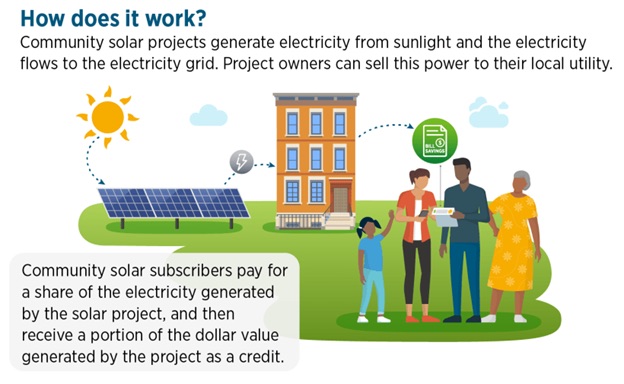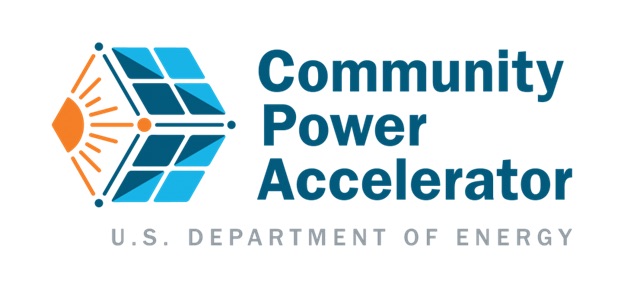Enabling More Equity-Focused Solar Energy Deployment in the U.S.
Households hardest hit by inflation and rising energy costs are often the ones that can’t get access to solar energy, and the savings that frequently come with it. Families that rent or live in multifamily housing cannot typically install rooftop solar systems. Others can’t afford the up-front costs of repairing a roof or installing solar panels, even though the price has dropped significantly over the last decade.
Community solar — a growing solar development model — allows households to subscribe to a larger solar array rather than installing one on their own roof. A recent study published by the Lawrence Berkeley National Laboratory and the National Renewable Energy Laboratory (NREL) analyzed data from 11 states, and found that people who adopt community solar are over six times more likely to live in multifamily buildings, over four times more likely to rent, and earn 23 percent less annual income than rooftop solar adopters — showcasing community solar as an essential part of equitable clean energy adoption in the U.S.

Community solar projects use sunlight to generate electricity, which flows through a meter to the utility grid. Community solar subscribers (i.e., households, businesses, or any other electricity customer) pay for a share of the power generated by the community solar project, typically in the form of a monthly subscription fee. When the community solar project is located in the same community as the household, there are opportunities for those projects to bring meaningful benefits to their communities. The U.S. Department of Energy (DOE) Solar Energy Technologies Office has invested $82 million in active projects focused on accelerating the adoption of equitable community solar. These projects work to offer a pathway for families to lower their energy bills, and provide community benefits like resilience from power outages and economic development.
Yet, many developers hold off on developing community solar projects, and lenders are reluctant to fund those that do — preventing some communities from accessing solar energy altogether.
When building a community solar project, developers often finance pre-development funds from a lender. Once a community solar project is up and running, the developer can make money from charging subscribers a small monthly fee, in addition to selling Solar Renewable Energy Credits and taking advantage of tax credits.
While many lenders have developed products to support this market, some developers still struggle to meet the bank’s requirements for a loan. Many lenders require credit histories from the project’s future subscribers, and proof of the project’s likelihood of success — which can be difficult to obtain before a project is built. When developers do find a lender, loan rates can run into the double digits due to the perceived risk of the project. As a result, many developers are hesitant to build community solar projects that serve low- and moderate-income households for fear they won’t be able to get the financing they need.
Finding solutions
Lynn Heller is Founder and CEO of the Climate Access Fund, a Maryland-based nonprofit. In 2018, along with the Coalition for Green Capital, she established the Climate Access Fund as a green bank that focused on filling these financing gaps that stop community solar developers from serving more low- to moderate-income households.
At the onset, the Climate Access Fund focused on creating a fund that would compensate solar developers for late or defaulted payments by subscribers until those non-paying subscribers could be replaced. While this was helpful to community solar developers, the Climate Access Fund realized that low-cost financing was also needed at the start, in order to encourage developers to serve customers with higher energy burdens. In response, the organization started offering loans. Today, the Climate Access Fund fills a third gap in the market: direct development of rooftop and parking canopy community solar projects that are located in historically disinvested communities.

While the Climate Access Fund has had the resources and expertise to be both a lender and a developer, many organizations aren’t able to do the same.
One way DOE is working to replicate the fund’s success is through our Community Power Accelerator, an online platform that connects community solar developers with investors, philanthropists, and community-based organizations, with the goal of getting more equity-focused community solar projects financed and deployed.
The Accelerator offers developers resources to get their projects ready to shop around to financiers, including no cost technical assistance, a “Credit-Ready Checklist,” and a popular training course led by the University of New Hampshire’s Carsey School of Public Policy.
To date, the Accelerator has 114 verified projects seeking capital — with 143 megawatts of potential community solar, and over $1 billion in funds committed by capital providers.
The Community Power Accelerator is a part of DOE's larger National Community Solar Partnership, a coalition of community solar stakeholders working to expand access to affordable community solar to every American household, and enable communities to realize other benefits, such as increased resilience and workforce development. The National Community Solar Partnership's goal is to enable community solar systems to power the equivalent of five million households by 2025, and create $1 billion in energy savings for subscribers. This target represents 20 gigawatts of community solar — a near tripling from the seven gigawatts available today.
In a report released earlier this year, NREL estimates that if all technically viable community solar is deployed, it could serve more than 53 million households and over 300,000 businesses in the U.S. that cannot access rooftop solar, representing nearly one terawatt of potential community solar capacity.
The need for more equitable access to solar energy is great, and a challenge that we must overcome to meet our nation’s climate goals and provide a better energy future for all Americans. Developers needing assistance with community solar projects, and lenders looking to finance more clean energy, should check out DOE’s Community Power Accelerator and join the National Community Solar Partnership.
Becca Jones-Albertus is the Acting Deputy Assistant Secretary for Renewable Energy, U.S. Department of Energy Office of Energy Efficiency & Renewable Energy.
Department of Energy Office of Energy Efficiency & Renewable Energy | www.energy.gov
Author: Becca Jones-Albertus
Volume: 2024 September/October












